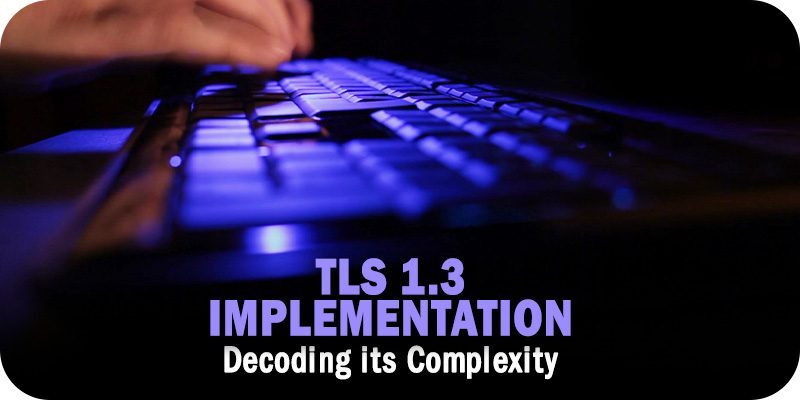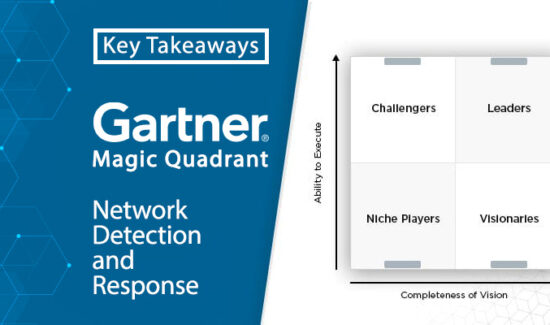Decoding the Complexity of TLS 1.3 Implementation: A Deep Dive


Solutions Review’s Contributed Content Series is a collection of contributed articles written by thought leaders in enterprise software categories. Scott Aken of Axellio dissects the complexity and importance of implementing the newly introduced TLS 1.3 protocol.
As the digital ecosystem expands and evolves at a rapid pace, data security becomes a cornerstone, ensuring the integrity and seamless transmission of information. The newly introduced Transport Layer Security (TLS) protocol, TLS 1.3, marks a new chapter in online security. However, its groundbreaking advancements usher in unique and challenging implementation issues that can significantly impair our ability to monitor traffic for both internal and external threats.
This article explores the security risks and complexities that TLS 1.3 introduces, and organizations have struggled with, while also offering solutions to the challenges of this new frontier of data protection while ensuring traffic visibility.
TLS 1.3: Decoding the Complexity of Implementation
The Changing of the Guards: TLS 1.3
The first version of TLS was published in 1999 and various versions of this encryption technology are now applied to the majority of all encrypted traffic used in our corporate and public networks. Introduced in 2018, the most recent version, TLS 1.3, is now gaining broader adoption in the market, marking a significant advancement in the field of data security. But unlike previous TLS version changes, TLS 1.3 constitutes a significant improvement in both performance and data security, creating a paradigm shift by delivering dramatically enhanced encryption security. However, these benefits come with a trade-off, as they significantly reduce the visibility organizations have into their traffic. This change necessitates a fresh approach to how to secure the network infrastructure.
Organizations must understand the impact and be prepared to rethink their established security methodologies, adapt existing systems, and overcome potential obstacles on the path to successful implementation.
The TLS 1.3 Conundrums – More Security or Continuous Visibility?
One major step for enhanced security by TLS 1.3 is the elimination of ciphers (the algorithm that performs the encryption and decryption) that have been shown to be already compromised by threat actors but are still in use by previous versions. TLS 1.3 is also the first version that introduces Perfect Forward Secrecy (PFS) which generates unique keys for each user interaction. This is unlike previous versions of SSL and TLS that applied a public key that was visible on the wire and one private key, that was only known to the endpoints of the conversation but was static and never changed. Therefore, if hackers were able to discover the private keys of one of the participants, they would be able to decrypt all communication for this endpoint, whether in the past or the future. Utilizing copies of private keys from each endpoint was also the approach that traffic monitoring applications like firewalls or intrusion detection and prevention systems applied to be able to decrypt and monitor all communication within their network.
The introduction of TLS 1.3 and PFS has changed this approach by constantly generating new private keys that are only good for a single session, be it an IM message exchange or a single email. Each session key expires immediately after the session is terminated. Therefore, obtaining one private key is only good for a single endpoint conversation and cannot be applied to any other conversations. As a result, traffic previously recorded or seen going forward cannot be decrypted. However, this also limits the visibility of the above-referenced traffic monitoring applications that rely on in-depth content analysis (deep packet inspection) to determine whether a communication or endpoint has been compromised by a threat actor.
Security Operations – Flying Blind?
Security Operations over many years have relied on traffic analysis and deep packet inspection to detect anomalies and potential threats by analyzing the packet content beyond basic information like the IP source and destination address, protocol used, and packet length. However, TLS 1.3’s more sophisticated encryption turns all of this information into an unreadable cipher, limiting the effectiveness of these vital inspection mechanisms and therefore effectively hiding activities of regular users, as intended, but also threat actors and intruders. This has been reflected in a study by Enterprise Management Associates in 2022, which found that 44 percent of the interviewed organizations implementing TLS 1.3 had to roll back to earlier versions as it severely impacted their security visibility with their current security monitoring solutions.
Therefore, applying TLS 1.3 is not just about enhancing encryption security; it demands a thorough re-evaluation of the entire traffic and security monitoring infrastructure. This process requires a carefully planned transition that maintains both data transfer security and visibility into security operations.
From Challenges to Opportunities: A Way Forward
Several approaches have been suggested, such as using TLS 1.3 only for public network traffic and relying on earlier, more monitorable versions internally. However, these older versions can be more easily compromised by internal network threats. An alternative solution suggests making every security monitoring appliance an active part of the encryption chain. Despite the fact that this adds additional transfer delay that many real-time applications may not be able to afford, it also creates additional vulnerabilities in the network and an increasing administrative overhead. And relying on endpoint protection alone creates the issue that these can be compromised and manipulated by sophisticated threat actors and leave many endpoints such as Operational Technology (OT) systems unprotected.
Therefore, we certainly need the security protection that TLS 1.3 based encryption can provide across the network while upholding the transparency and performance of the network. Our current approach of each network traffic analysis solution having their own means of getting a copy of the traffic, decrypting it, and analyzing it is therefore no longer sustainable. What is needed is a central traffic monitoring infrastructure that can capture and decrypt all traffic once, and then provide copies of this traffic safely and securely to each existing analysis application. This protects the investment and operational approach with the existing monitoring infrastructure while making TLS 1.3 traffic available for analysis to all applications that provide us with this vital network and security visibility.
While this requires a significant change in the network and security monitoring approach, it also opens the door to make our security monitoring infrastructure more effective, even allowing us to reduce complexity and infrastructure costs. By carefully assessing our approach and infrastructure and planning for this new paradigm that TLS 1.3 introduces, it allows us to enhance the security of our infrastructure – enhancing both data transfer protection and visibility while streamlining our monitoring approach.
Conclusion: Charting the TLS 1.3 Voyage
Implementing TLS 1.3 can seem like navigating uncharted waters. The complexities are diverse, but so are the opportunities for significantly improved data security. Charting a course through these challenges with preparation, adaptability, and a comprehensive understanding of the terrain will enable organizations to harness the potential of this new era of data protection. Along this journey, maintaining a focus on both innovative solutions and tried-and-true practices will be essential, ensuring that the transition to TLS 1.3 not only fortifies security but also aligns with organizational goals and operational realities.





















